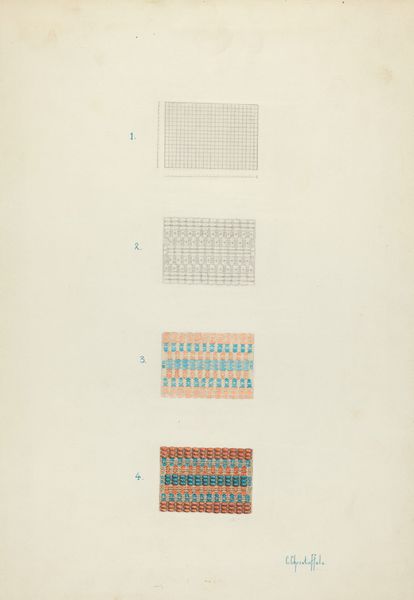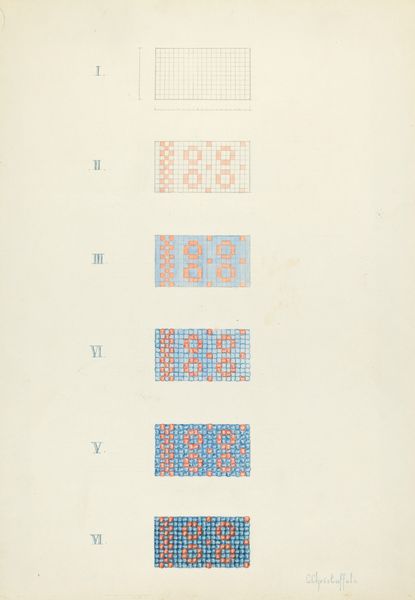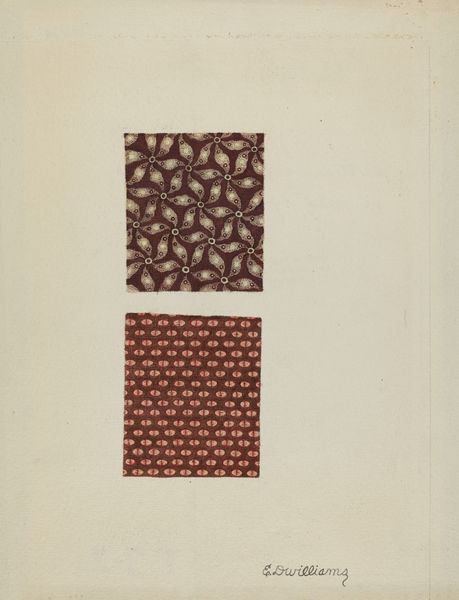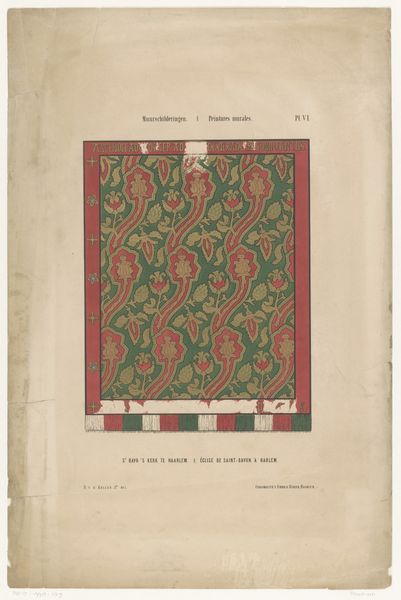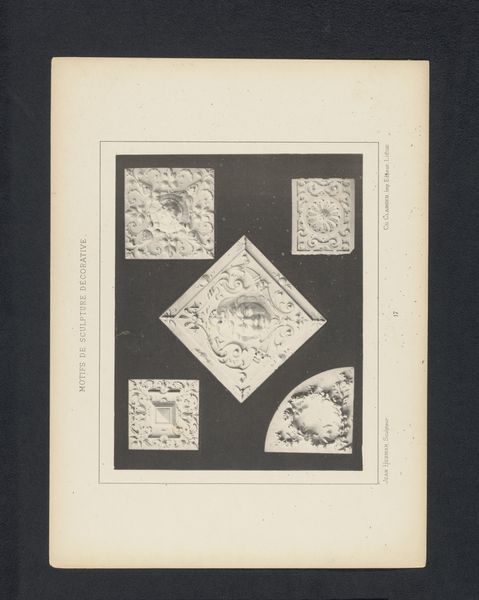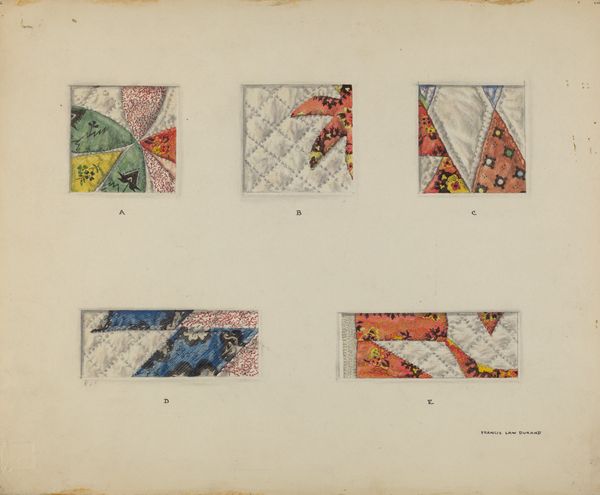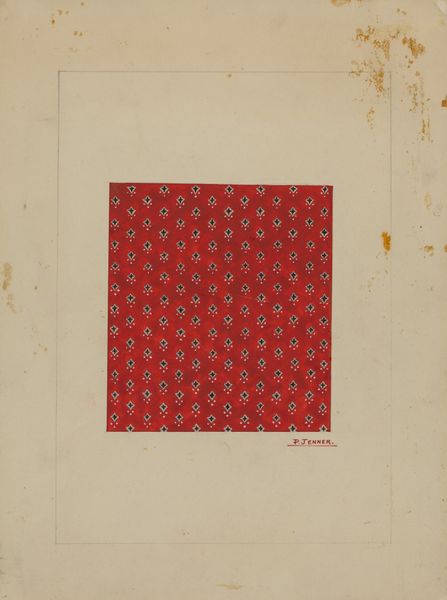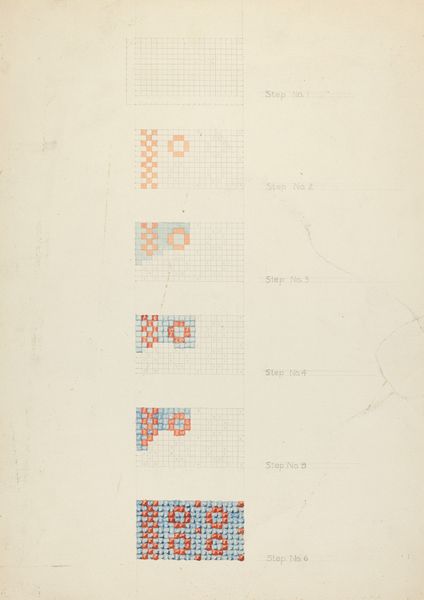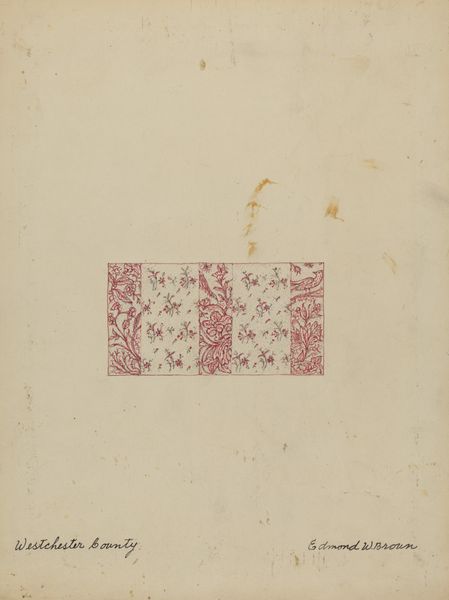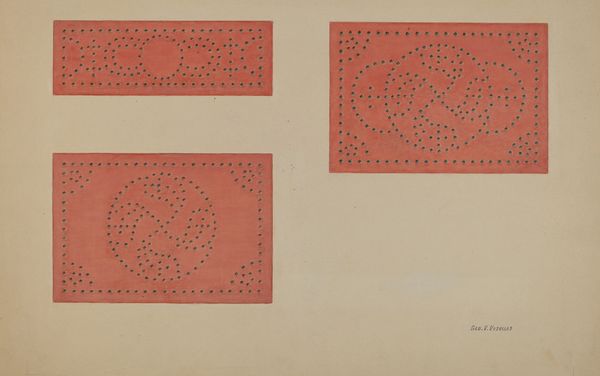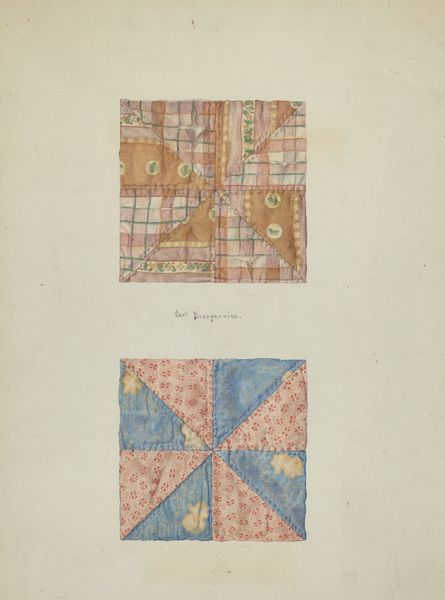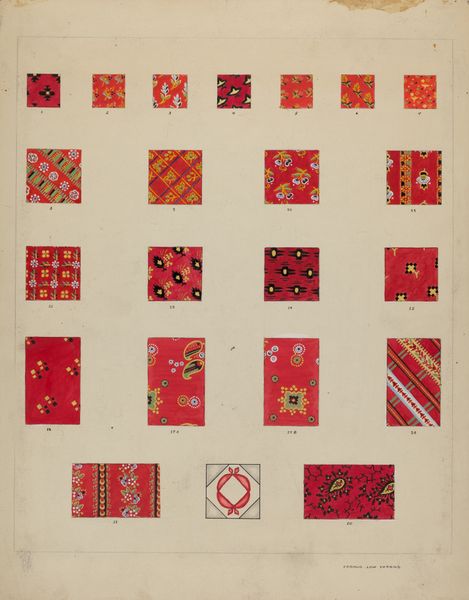
drawing, paper, watercolor
#
drawing
#
paper
#
watercolor
Dimensions: overall: 35.6 x 29.2 cm (14 x 11 1/2 in.) Original IAD Object: 99" square
Copyright: National Gallery of Art: CC0 1.0
Editor: So, here we have "Quilt Patches," a watercolor and pencil drawing on paper by Francis Law Durand, created around 1937. At first glance, it seems like a straightforward presentation of textile samples. What do you see in this piece, beyond the obvious decorative element? Curator: It's deceptively simple, isn't it? These patches are more than just aesthetic exercises. Consider the time period—the tail end of the Great Depression. Quilting was often a necessity, a way to create warmth and utility from scraps. Durand, by presenting them as art, elevates a traditionally feminine and domestic craft. Do you think she challenges that binary, questioning what we consider 'high' and 'low' art forms? Editor: That’s a really interesting point about the time period and the elevation of domestic craft. The grid format also seems very intentional now – is it making a statement on production, gender or identity? Curator: Exactly! And think about the act of replication inherent in quilt making, now mediated through drawing and watercolor. The careful rendering of each patch suggests a deeper engagement. Perhaps Durand is reclaiming and validating this form of labor and creativity, one often unseen and undervalued in the art world and wider social structure. It speaks volumes about class, labor, and gender. How do you perceive that playfulness within the patches? Editor: Now I'm thinking about how these ‘patches’ are all displayed and that this connects to so much more than just traditional ideas around the domestic… Curator: Precisely. These patterns, so carefully presented, encourage us to examine the social and historical frameworks that determine value and artistic merit. Editor: It makes you wonder how much we still devalue certain types of creative work today. I’m glad you gave some insight on how to view this, beyond my first glance at decoration! Curator: Absolutely. Art is always a reflection of its context, urging us to question, connect, and redefine our perspectives.
Comments
No comments
Be the first to comment and join the conversation on the ultimate creative platform.
